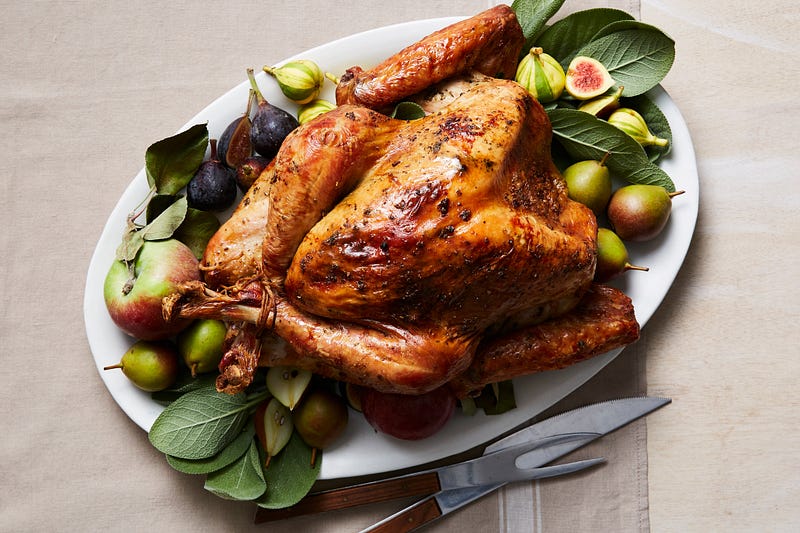
If it’s Thanksgiving and you’ve forgotten to defrost your turkey in the fridge, don’t panic. It is entirely possible to cook a frozen turkey in the oven and have a delicious and safe result for you and your family to eat.
Part1
Thawing turkey in the oven
- Take the turkey out of the freezer and unwrap it. Use scissors to cut the mesh and plastic from the turkey. Leave the giblet bag in the turkey for now.
2. Place the turkey on a roasting rack inside a roasting pan.
3.Preheat the oven to 325 ° F (163 ° C). If there are multiple racks in the oven, remove all except the one in the bottom third. This way, there will be enough room for the turkey.
4. Place the frozen turkey in the oven and let it thaw for 2.5 hours.
Avoid opening the oven during this time so the heat doesn’t escape. After 2.5 hours, the turkey should be thawed and will be golden brown. Don’t worry about seasoning the turkey just yet, the seasonings won’t stick to a frozen turkey. You can season it after it thaws in the oven for a couple of hours.
5. Use a meat thermometer to check the temperature of the turkey after it thaws. Place the thermometer on your breast or thighs, and give it a few seconds to read the temperature. At this point, the turkey should be around 100 to 125 ° F (38 to 52 ° C).
If the temperature is less than 100 to 125 ° F (38 to 52 ° C), allow the turkey to continue roasting and check it periodically until it reaches the proper temperature.
Part2
Spread and season the turkey
- Remove the giblet bag from the turkey’s neck. The giblets are the organs of the turkey that the butcher has packed and stuffed into the neck of the turkey. Now that the turkey is partially thawed, you can remove the giblets and discard them (or use them to make a sauce )
- Spread ½ cup of melted butter on the turkey with a brush to spread. Covering the turkey with butter will give it more flavor. If you don’t have butter, you can use olive oil instead.
- Season the turkey with salt and pepper. Start with 2 tablespoons of salt and pepper, and if it’s not enough to cover the entire turkey, gradually add more. Sprinkle the seasonings on top of the turkey, then rub gently with your fingers.
- You can also use other types of seasonings, such as rosemary, thyme, and sage.
Part3
Roast the turkey
- Roast the turkey for an additional 1.5 to 5 hours, depending on its weight. The heavier the turkey weighs, the longer you will need to roast it. You can determine how much the turkey weighs by checking the wrapper it came in. [9]
- 3.6 to 5.4 kg (8 to 12 lb): Roast for an additional 1.5 to 2 hours.
- 12–14 lbs. (5.4–6.4 kg): Roast 2–3 more hours.
- 6.4 to 9.1 kg (14 to 20 lb): Broil for an additional 3 to 4 hours.
- 20–24 lbs. (9.1–10.9 kg): Broil for an additional 4–5 hours.
2. Check the turkey every hour. When you check the turkey, check its temperature with the thermometer to make sure it is rising. You can also slather on more melted butter or oil for added flavor. If the turkey looks like it’s burning or getting too crispy, cover the top with aluminum foil.
3. Remove the turkey from the oven once it reaches 165 ° F (74 ° C). The turkey will be fully cooked and safe to eat at this temperature. Check the temperature with the thermometer at different depths in different places to make sure that all of the turkey is cooked through. [eleven]
- Check the center of the turkey with the thermometer, as it will take longer to cook.
4. Let the turkey cool for 30 minutes before serving. After 30 minutes, the turkey should be cool enough to cut and serve. Slice up the turkey and serve it with its stuffing, mashed potatoes, or your favorite garnishes. [12]
Warnings
- Never try to grill or fry a frozen turkey. Cooking a frozen turkey in an oven is the only safe way to prepare it without first thawing it.